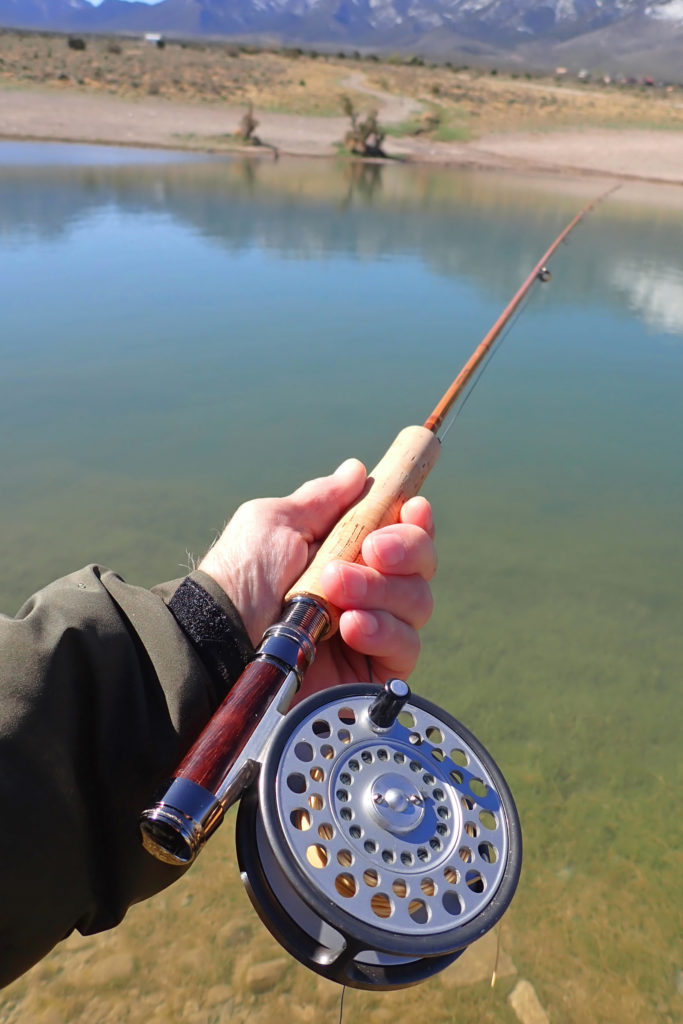
Most every serious trout angler has heard or read about the history of bamboo fly rods. Split cane rods replaced wooden poles or bamboo poles for fishing in the early 1800s. Apparently there is some confusion about where split cane rods were invented (France, England, China, or USA), but as for America it is said that Samuel Phillipe of Easton, Pennsylvania, was the first American to experiment with making multisided rods with strips of bamboo glued together. No doubt the industrial age advanced the craft of rod making in the late 1800s.
After the Civil War, H.L Leonard, a gunsmith and master craftsman, began making split cane rods. Leonard is credited with creating the first six-sided rod (a hexagonal rod), which is still predominant today. He first built square or quadrate rods, but he eventually started making the six-strip or hex rods because good quality cane was hard to find in the late 1800s. It was often full of scorch marks and insect damage, and so it was easier to find six thin strips of good quality cane than four wider strips for the quadrate rod. Not sure that problem holds true today, and so several modern-day rod makers will offer quad or pentagonal rods as well.
Other historically well-known bamboo rod makers were Paul Young, F.E. Thomas, L.L. Dickerson, and H.W. Hawes. Today there are many small independent craftsmen who make good bamboo rods, but the better-known companies are Orvis (founded by Charles F. Orvis) and R. L. Winston (founded by Robert Winther and Lew Stoner, thus the R L Winston). As for me, I have been following Sweetgrass Rods since about 2010.
One of the founders of Sweetgrass is Glenn Brackett, who has deep ties to R. L. Winston. Glenn’s dad and grandpa often took him to the original Winston shop in the Market Street area of San Francisco. Eventually he began working in the shop under the mentorship of Doug Merrick and Garry Houghs. In 1974 Glenn became a partner in Winston, and in 1975 he became co-owner with Tom Morgan, and the two moved Winston to Twin Bridges, Montana. In 1991 Glenn and Tom sold Winston but remained employees with the company. The new owner did not view Winston’s bamboo products as profitable as their graphite rods (which is true of course because bamboo takes many more hours to produce a fly rod blank). But it was likely the hiring of a numbers minded CEO that created a change in attitude, or the soul of R. L. Winston. In 2005 Glenn resigned, and his team of “Boo Boys” followed their leader with their own resignations, and shortly thereafter Sweetgrass Rods was birthed. It is a sad story because Glenn grew up with Winston, was a partner and an owner, and the Boo Boys had a growing reputation for excellent craftsmanship at Winston. But it is also heartwarming to know that bamboo artisans like Glenn and his team were not willing to compromise their craft for the sake of profit. And I must say that Sweetgrass prices are in fact lower than what you might expect at Winston or Orvis today. Sweetgrass evokes a working-class vibe, and they simply want their fly rods to be fished often.
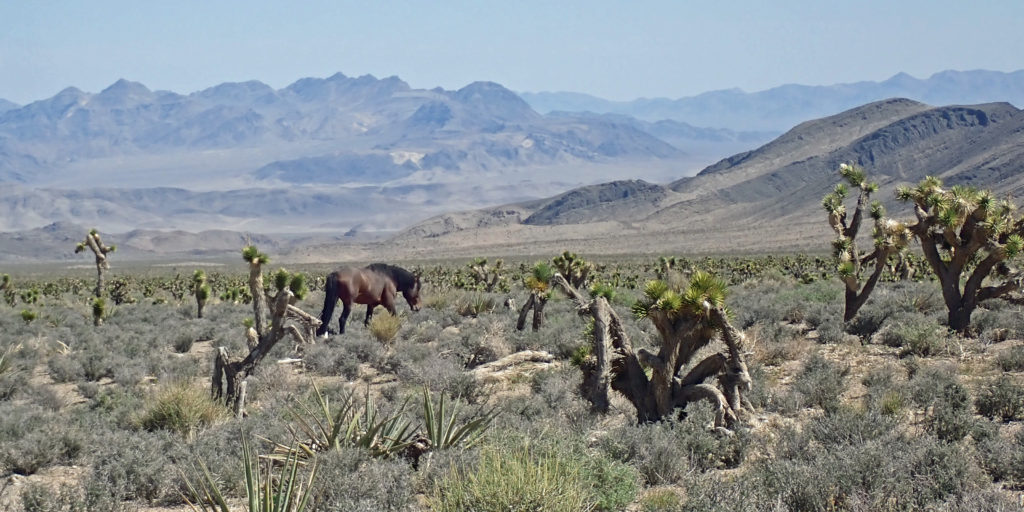
The making of split cane bamboo rods begins with the bamboo grass (yes, bamboo is classified as a grass). Today, it is generally recognized that the best bamboo for split cane fly rods comes from the Tonkin Gulf region of Guangdong Province in China. Tonkin bamboo is said to be one of the strongest bamboo species because of its high density of fibers, which gives the rod its strength and flexibility. Tonkin bamboo also tends to be straighter, with well-spaced nodes. Sweetgrass Rods, the maker of my rod, sources its cane from the village of Aozi in the Guangdong Province. You can understand why my rod maker calls itself Sweetgrass Rods.
When I build rods, I start by selecting a graphite or fiberglass rod blank already “manufactured” by that company’s specifications which are unknown to me. All they tell me are its length, its weight in ounces, its action (versions of fast, medium, and slow recovery from being bent), the fly line weight it is prescribed to cast well, and the diameter of the ends of its butt and tip. Attaching the hardware (the handle grip, real seat, ring keeper, wrapping thread color(s), and guides) comes into my realm of creativity and personal preference. On a good build I can produce a fly rod in about four days.
For a bamboo rod maker, the experienced and highly skilled labor starts with finding the Tonkin cane in China. They split the cane into long pieces and dry it out. Next, they cut and shave those pieces into rough wedges, and eventually plane and mill them into precisely measured strips (tolerances of .001 inches). The best shops use metal planing forms machined to their own specifications. These special forms are needed according to the final shape based on the number of sides, e.g., quadrate for four, pentagon for five, and hexagon for six. For a two-piece hex rod, there will be twelve precisely planed strips (eighteen when an extra tip is included). The depth, or width, of the tapered strips must vary based on the rods intended length (usually between 7 and 9 feet), line weight (usually 3 to 6 weight), and the number of sections (usually two or three). When you consider all these variables, your head will get dizzy.
Once you have the required strips produced from that laborious process, you must match them in a way that does not align the Tonkin cane nodules together to avoid their inherent weakness, and techniques are then applied to straighten the strips (bamboo is not perfectly straight, so the craftsman must apply some influence). Then the required strips are glued together in a special wrapping process, which afterwards the string and glue are scraped off the blank which is then lightly sanded and ready for varnishing. Depending upon the skill, experience, and knowledge of the rod maker, this process can take between 40 and 100 hours just to produce one rod blank.
I admit that I have ogled the bamboo fly rods offered by Orvis and Winston over the years. I think first and foremost a fly rod should be a well working tool, but I also believe it can be a work of art as well (they are not mutually exclusive). I am not one for gaudiness, but I like the colors, the finely machined hardware, and the materials and texture of the hardware to be pleasing to my eye. I told Glenn that I did get a little choked up when I unwrapped my new fly rod. It truly is beautiful, in the subtle way I most appreciate. That made Glenn happy, but he encouraged me to fish her often. First and foremost, it is a tool.
There is one especially historical feature of my boo rod. When discussing the wood for the reel seat, Glenn revealed that he had wood stock from a 190-year-old Cedar of Lebanon tree that fell on James Madison’s Montpellier Estate in Vermont around July 2019. As if wood from a tree planted by our 4th President of the United States weren’t enough, folklore has it that the tree was one of several gifted to Madison in 1824 by the Marquis de Lafayette. Lafayette was instrumental in the American Revolution against the British, and he had great affection for many of our founding fathers. Not only that, but the Cedar of Lebanon tree also has biblical roots (pun intended). I opted for the Cedar of Lebanon wood.
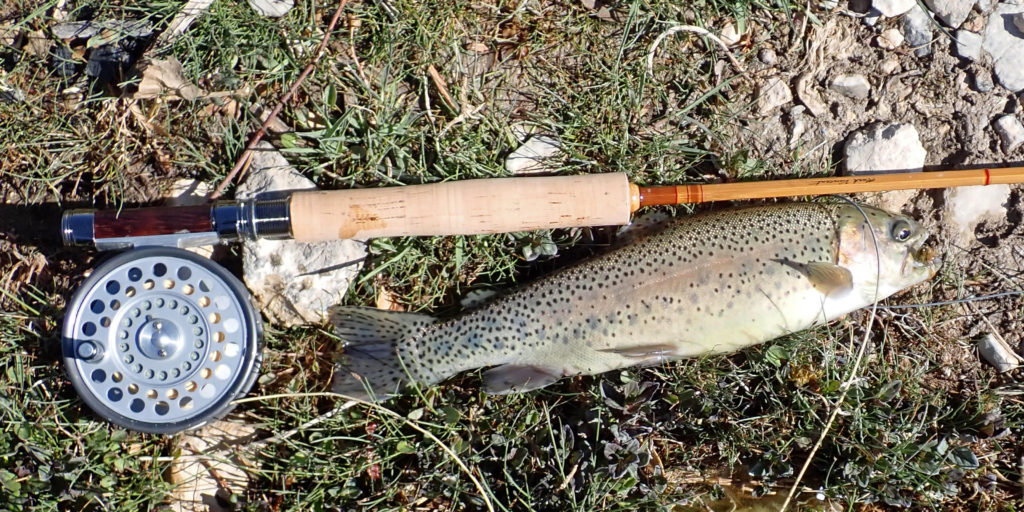
Today I took my new rod to Cold Creek; I could not wait for more productive water to fish, so my old friend Cold Creek would get the honor of receiving the first casts from my new gal.
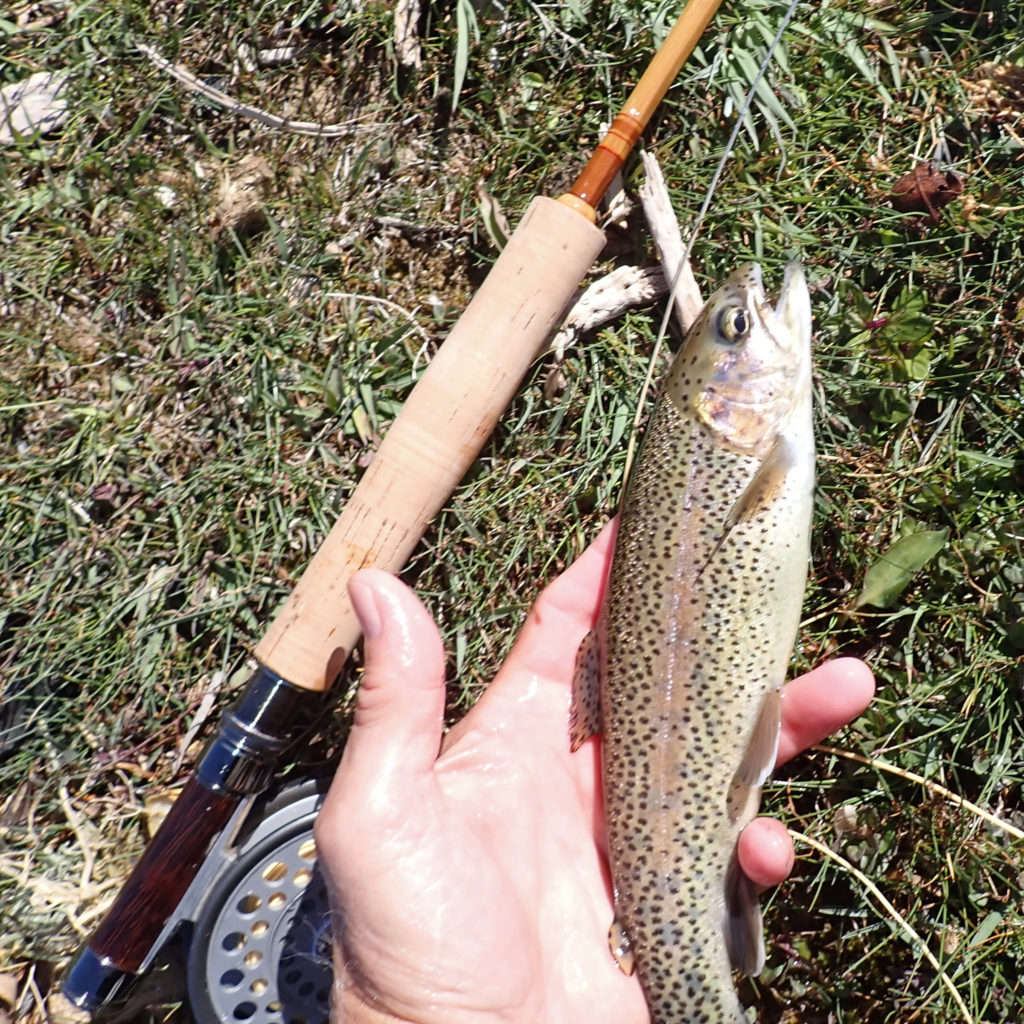
I matched her with my 40-year-old Hardy L.R.H. Lightweight reel spooled with a #5 sink-tip line. The first stocked Rainbow was landed on just my fourth cast. I went on to land three more, and surprisingly they were some of the best that Cold Creek has to offer. It was wonderful. I will say the rod cast smooth as silk, but my casting needs to adjust to her softer demeaner as my own graphite builds tend toward the fast or stiff recovery response. Consequently, I created a few tailing loop knots, but they did not deter me, and I will get to know my new boo rod better as I take her on more fishing dates.
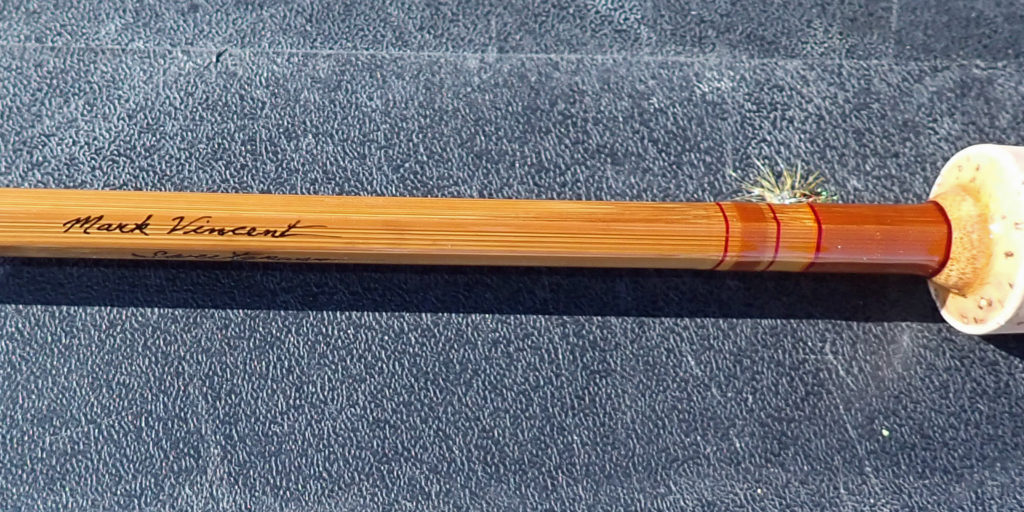
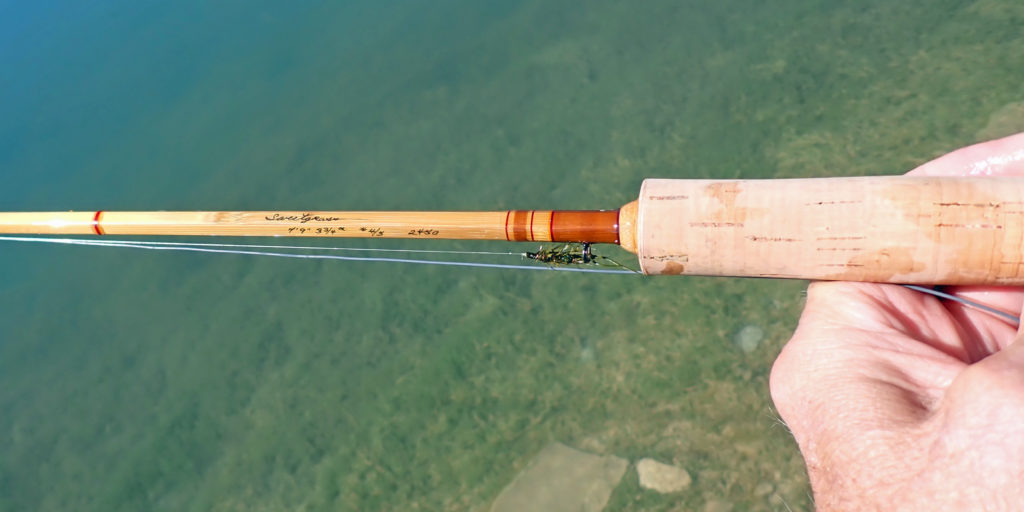
If you are interested in a bamboo trout rod, I urge you check out Sweetgrass Rods. Their Mantra series rods use less costly hardware, making their current pricing very attractive in my opinion. And they do make bamboo rods for salt water and spin casting. Glenn was a good listener and talking with him made me feel as if I was getting a personal service rather than a product someone was trying to sell.
I think my dad and my brother, both fine outdoorsmen and fly anglers who passed long ago, were smiling with me today.
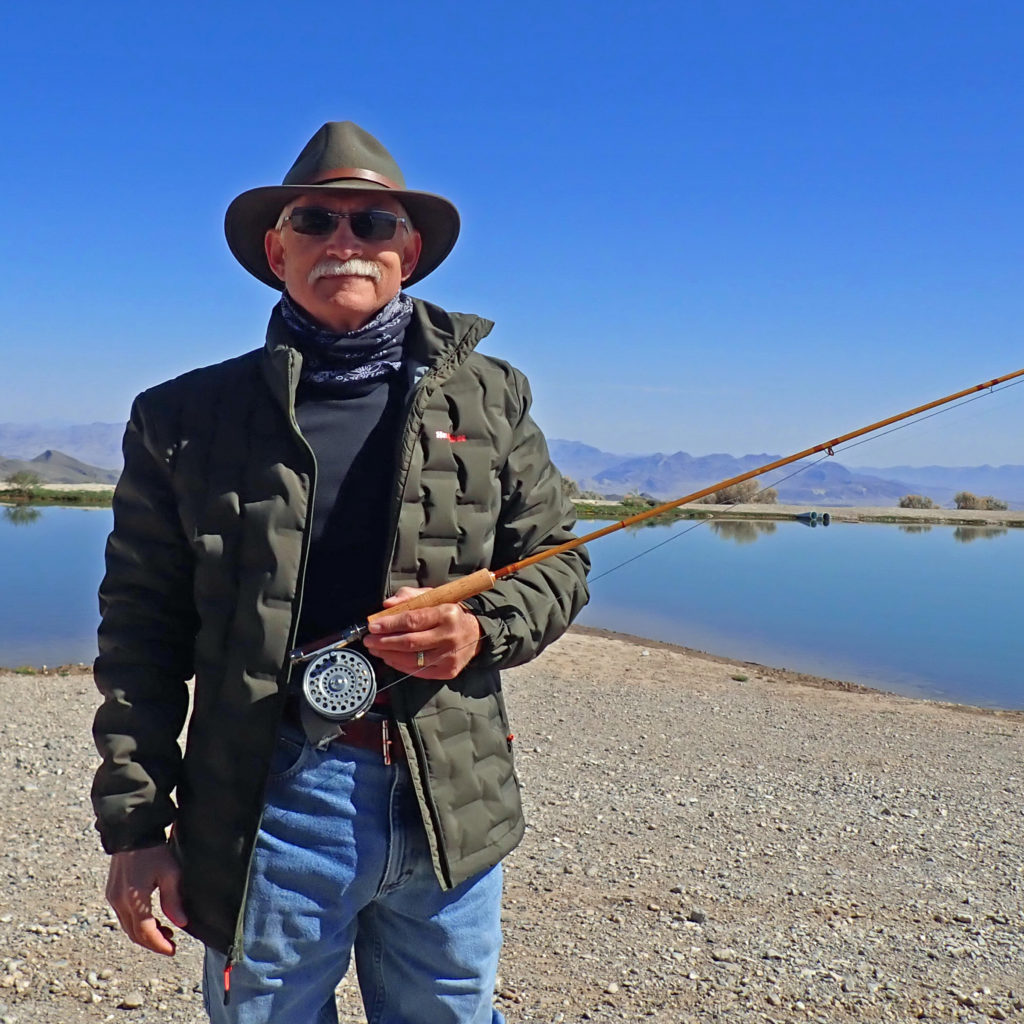
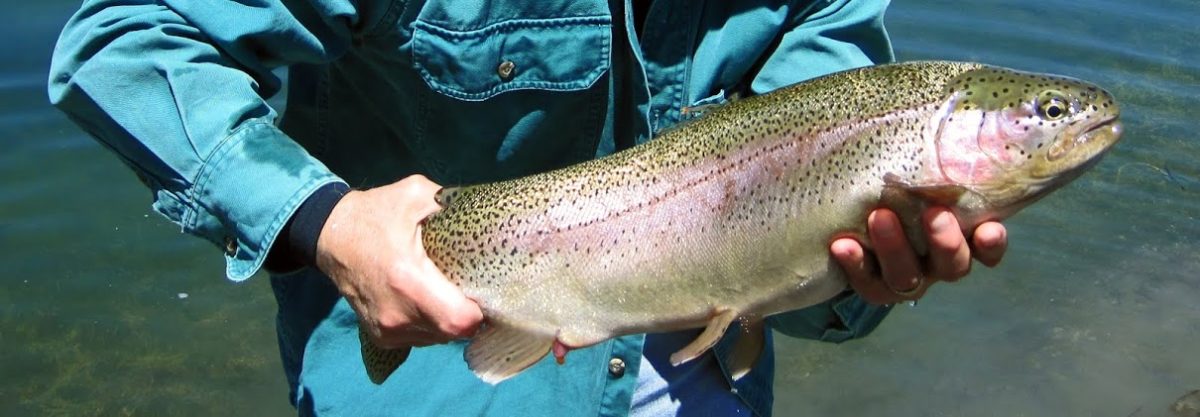
Sounds like you Enjoyed the Quality Craftsmanship. I’m pleased you decided to splurge and try the bamboo .. you’ll become accustomed to it before you know it. Love you Dad – ❤️
Thank you Doug. I’ll get accustomed to her for sure! Love you too!
Thanks Mark:
Another great post.
May God bless you.
John Young
Las Vegas
Wonderful story and memories…Blessings to you and yours this Easter…please say hi to Denise, Emily and the crew!
Thank you Steve. May you, and your expanded family rejoice in our risen Lord.
John, your comments are always appreciated.
You deserve to have the best and it looks as though you are going to be extremely happy with your new boo rod. Always enjoy the in depth history you provide and am (once again) impressed with your knowledge. Maybe you’ll be able to try it out with Bruce at Big Bear Lake soon. 😉
May the Vincent clan have a blessed Easter. sister June =))
Yes June, He is risen. Our Savior is risen.
Love to you, Mike & the kids!
Thanks, Mark. Your posts are always such a joy and encouragement. I trust you had a wonderful Easter with your family. God bless you.
Yes, Randy, Easter was wonderful. Lots of time to read and reflect, to spend time and be present with the extended family. So much to be thankful for, especially Jesus’s saving grace on Golgotha, and the promises evident in His resurrection. I’m also thankful for your faithful encouragement. May the Lord continue to bless you and keep you…